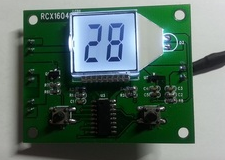How to control smt solder paste for wafer-level CSP assembly
In this article, the editor will continue to explain and analyze the content of smt solder paste in the article "Control of Solder Paste Printing Process in Wafer-Level CSP Assembly Process".
1. The choice of printing squeegee
The squeegee material generally has two kinds of stainless steel sheet and rubber. For the solder paste printing of wafer-level CSP, a metal squeegee is used. The width of the metal blade is generally 40mm, and the angle is 60°. Determine the appropriate blade length according to the size of the printing area. If the direction parallel to the track is defined as the length E of the printing area, the length of the squeegee L1=L+2*0.5In, that is, the length of the scratch should exceed about 0.5In at both ends of the printing area. A squeegee with an improper length will accelerate the wear of the steel mesh and the squeegee, and the solder paste will be unevenly printed.

2. Setting of printing parameters
The main printing parameters that can be set for the automatic printing machine are squeegee pressure, printing speed, demolding speed, stencil cleaning method and frequency, etc. The solder paste printing of fine-pitch components requires a lower printing speed, which can be set at 0.5-2.5in/s. The pressure setting can be set from low to high. Observe whether the solder paste on the surface of the stencil is scraped clean. If there is solder paste on the stencil behind the squeegee, increase the pressure or reduce the printing speed appropriately to ensure that the squeegee does not move. Solder paste remains. If the pressure is too high, it will cause the solder paste to drain out. If the pressure is not enough, it will not produce a clean cleaning effect on the steel mesh, will leave an excessive amount of solder paste, increase the amount of deposition, and cause welding defects. Printing pressure is related to printing speed. The faster the printing speed, the greater the printing pressure required. Therefore, when smt patch proofing manufacturers adjust the printing effect that is satisfactory for printing, a single adjustment often fails to meet the requirements, and the pressure and speed need to be adjusted at the same time.
The control of the demolding speed is very important for the printing of fine-pitch components. If the demolding speed is too fast, the solder paste will stick to the hole wall of the stencil. Over time, it will plug the hole and cause less tin or no solder paste on the pad. When the printing fine pitch is QFP or QFN, if the demolding speed is too fast, the ends of the solder paste will be sharpened, and the solder paste will be short-circuited after the component is attached. Unless there is a requirement to use a faster demolding speed, the general demolding speed is required to be as low as possible to reduce the occurrence of the above problems. The suitable demoulding speed is 0.25~0.5mm/s.
The automatic printing machine can clean the stencil automatically, and the cleaning method and frequency can also be set freely. The first cleaning method can choose to use the cleaning solvent "wet wipe", then vacuum adsorption, and then "dry wipe". The printing of fine-pitch components requires a higher cleaning frequency, and it is more appropriate to clean the stencil every 2 to 3 times.
3. Environmental control
Environmental control includes the control of workshop temperature and humidity. Maintain the temperature of the smt production workshop at 20-25°C and the relative humidity at 40%-65% RH. Temperature will affect the viscosity of the solder paste. Too high a temperature will reduce its viscosity, causing short circuits or solder balls. Too low a temperature will increase its viscosity, causing defects such as solder paste plugging, uneven printing and less tin. Too low relative humidity will make the solder paste dry, making it difficult to print, while higher relative humidity will cause the tin to absorb too much water and cause soldering defects such as tin beads. At present, in some fully automatic printing presses, there has been a local environmental control unit (Eau) that controls the internal temperature and humidity, which provides a guarantee for obtaining stable and satisfactory printing quality.
This article mainly explains the control of the solder paste printing process of the wafer-level CSP assembly process.